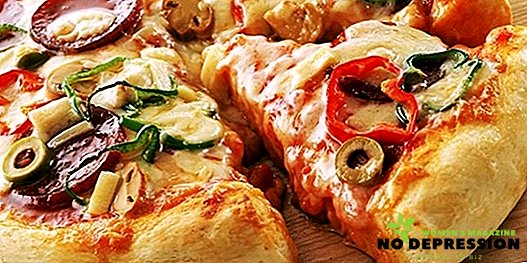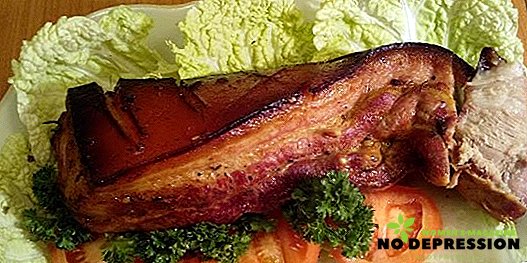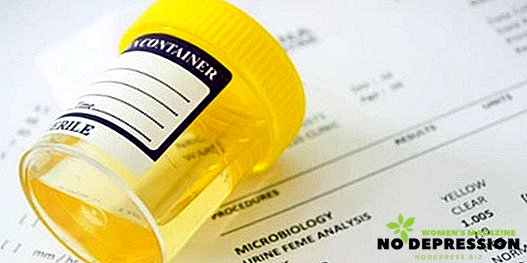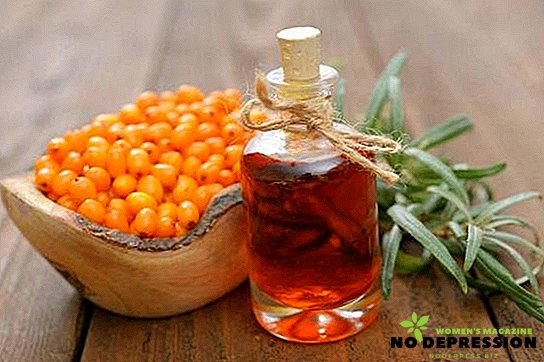Planting Hamedorei palm trees is an opportunity to start a house in the south, which will remind you of summer, sun, sea sandy beaches. The homeland of this plant is the warm, moist tropical forests of Mexico and Guatemala. Despite this, it is quite simple to grow Hamedorea at home, it is only important to know all the features of planting and further care of the plant.

The right choice Hamedorei when buying
It is necessary to responsibly consider the choice of the future "pet." Carefully consider the plant for damage: if there are broken branches, improperly formed, twisted or yellow leaves, it is advisable to refuse to buy such an instance.
Despite its unpretentiousness, the palm tree very often suffers from root rot, and the yellow leaves just indicate that the plant is infected with this infection. Also, when purchasing a palm tree, be sure to inspect it for infection by pests.
Having noticed tiny green or brown dots on the leaves of the plant either, refuse to purchase it. Most likely, this indicates the presence of the omnipresent spider mite.
Conditions for successful plant growing
Hamedorea is not capricious, but, like all home plants, she needs to create a comfortable environment.
Lighting
When choosing a place for a palm tree, it should be remembered that it is sensitive to direct sunlight, while it perfectly tolerates shadow and lack of light. The fact is that in their homeland, this plant grows in the shade of higher trees, which makes it an ideal option for growing in a home greenhouse or small apartment.
The main task is to choose a place for the plant from the north or west side of the room, where it will be reliably protected from the sun's rays. If there is no other place, the palm tree can be installed in the depth of the room far from the windows, which will greatly simplify its cultivation.
Temperature
 Like all palm trees, Hamedorea loves a warm, but not hot climate.
Like all palm trees, Hamedorea loves a warm, but not hot climate.
Therefore, if you can provide the plant with a temperature of about +22 degrees in the summer and about +16 degrees in the winter, you will be surprised at the saturated emerald color of the leaves, the rapid growth rate.
Palm tree does not tolerate extreme conditions, and therefore the temperature below +10 degrees will be critical for it, which can lead to the death of the plant.
Features care for hamedorea at home
Having provided her with the necessary temperature, air humidity, periodic feeding, pruning, protection from pests, you can be sure that your "green pet" will get everything you need for normal development.
Watering and moisture
The main thing in growing palm trees is to ensure high humidity. In all other matters, hamedorea is very patient, and the gardener's minor mistakes are unlikely to cause her discomfort.
The plant loves a humid tropical climate; it is unlikely to create one in an apartment setting.
Therefore, in order to save the plant from suffering, it is necessary to carry out spraying every day in the summer season and about 2 times a week in winter.
Also, the plant will gratefully treat bathing in the shower, in addition, water treatments will wash away the accumulated dirt.
To clean the leaves, you can wipe them several times a month with a damp sponge. Regular watering is important.
 In order for Hamedorea to develop normally, it is necessary to remember the observance of the summer and winter regime.
In order for Hamedorea to develop normally, it is necessary to remember the observance of the summer and winter regime.
When growing palm trees, try to avoid complete drying of the soil and its excessive moisture. In the summer the plants are watered at least two, but not more often 3 times a week. In winter, the palm tree is watered a maximum of twice a week, avoiding even a slight drying of the soil.
It is important to remember that you only need to water the plants with soft and filtered water. Due to the high lime content of tap water, the plant is in serious danger. Also remember that excessive watering can lead to rotting of the roots.
Top dressing
Due to the fact that the stage of active development of the palm tree falls on the period from April to November, it is at this time that fertilizer must be applied. Feed the plant on average at least twice a month. Ready-made fertilizers for palm trees can be used as suitable components, since they contain the necessary nutrients for the plant.
In winter and autumn plants need to be fertilized once a month. If your pet has a flowering healthy appearance, you can do without supplements at all, since excessive stimulation of palm growth in winter can cause the formation of weak shoots, which will spoil the decorative characteristics.
Leaf pruning
In order for Hamedorea to grow and develop, it is necessary to periodically remove the leaves, since pruning palm trees is an important condition for successful cultivation in apartment conditions.
Yellowed or dried leaves should be removed. But when performing the procedure, you must follow a few simple rules that will keep your pet's health ":
- Before cutting, be sure to wipe the inventory with alcohol, which will prevent the infection of Hamedorea with phytoinfections.
- Dry leaves are cut to live tissue.
- Places sections necessarily treated with fungicidal agents.
Fight against diseases and pests
Hamedorea is characterized by excellent immunity, so palm trees rarely suffer from various diseases. But with the wrong care, the plant may be exposed to rot, leaf spotting, sometimes the shoots dry out.
In this case, you must first identify the cause, then review the mode of care and correct any shortcomings. In the case of severe pest infestation of the palm tree, insecticides will have to be used.
The most dangerous pests for Hamedorei are mealybugs and spider mites. Noticing insects on the leaves, they should be thoroughly washed with warm water, adding a little soap or dish detergent. Similar procedures to destroy insects will not work, but you can reduce their population.
In the case of spider mite destruction, the plant must not only be washed, but the window sill, where the palm tree stood, should be treated. In the fight against pests, it is better to use drugs such as Kleschevit or Okarin. You can detect the presence of a mealybug with round plaques and a sticky secretion that forms on the back of the leaves.

In the case of a small amount, you can wipe the leaves and stalks with alcohol or pharmaceutical tincture of calendula. If the measures listed above are ineffective, it is necessary to treat the plants with Fitoverm.
If the root system was affected by rot, it is necessary to transplant a palm tree, while at the time of transplanting it is necessary to remove all the damaged areas and adjust the cleanliness of the waterings.
Transplant features
Hamedorea is not capricious, but needs a transplant after purchase. This event is the key to further successful development of the plant. In all other cases, palm trees are transplanted in the middle of spring. Young plants need frequent transplantation - the procedure is performed at least once a year. And plants that are more than 3 years old, such frequent changes in the place of growth are not needed, as palm trees develop very slowly.
Get a new pot before transplanting. Preference is recommended to give deep, but not wide specimens, since the root system of the palm tree is quite massive, it will need a lot of space for development. Wide containers are not suitable for the reason that the roots of the plant develops in length, not in width.
The soil not developed by the plant will begin to turn sour, which will negatively affect the development of the palm tree.
Adult plants are transplanted no more than once every three years - it is necessary to carry out work only in extreme cases, for example, if the soil is infected with insects or the roots of a palm tree are affected by rot.
In all other cases, the transshipment is performed while preserving the basal earthen coma, since this plant has very delicate roots that are easily damaged. An important role for the good development of palm trees is played by the composition of the earth. High-quality substrate should consist of sod land, perlite, peat and humus in equal proportions. A prerequisite for successful cultivation is a drainage layer at the bottom of the pot, which consists of fine gravel or expanded clay.
Breeding methods
Palm grows in the following ways:
- seeds;
- division of the bush;
- basal processes.
Any of these methods has both advantages and disadvantages, so each person must first familiarize himself with them and choose the most suitable option.
Seed cultivation
Hamedorea from seeds in room conditions can grow any person. When purchasing seed it is necessary to pay attention to the date of production. The fact is that the seeds during storage quickly age, which has a negative effect on germination. Each month, seed germination is reduced to 10%. However, palm seeds can be obtained independently if you have plants of both sexes.
 To pollinate a palm girl with a brush, you need to collect pollen from a male plant and transfer it to the flowers of the female "individual".
To pollinate a palm girl with a brush, you need to collect pollen from a male plant and transfer it to the flowers of the female "individual".
After the fruits ripen, collect the seeds from them. Soak in water for five to six days before planting. It is worth remembering that the seeds have a dense shell - so that a sprout can sprout from them, some plant growers cut them off with a needle file.
After soaking, the seeds are sown one by one into a glass filled with peat-sand mixture, covered with foil and left in a warm place until germination.
And so that the seeds are not covered with mold, a film is lifted up once a day to provide air flow. In addition, it is necessary to regularly spray the soil to prevent it from drying out.
The germination period is quite long. Purchased options germinate throughout half a year, the seeds collected independently - about 3 months.
When the first leaf reaches a length of 4 cm, it must be transplanted into a normal substrate for palm plants.
Division of the adult bush
Hamedorea reproduces well in this way. It is simple, is to plant several plants in their own pots.
Hamedorei breeding technology:
- carefully remove the plant from the pot;
- we divide a bush into the necessary number of parts;
- Each sprout is planted in its own pot.
It is best to hold events in the middle or end of spring. During the procedure it is necessary to use muffled light, the humidity of the air should be about 50%, the temperature - no more than +30 degrees.
With the help of root processes
Convenient and easy way to breed palm trees. It is quite simple, the implementation of this method does not take much time. It is necessary to separate the young basal shoots from the mother bush and transplant them into separate pots.












